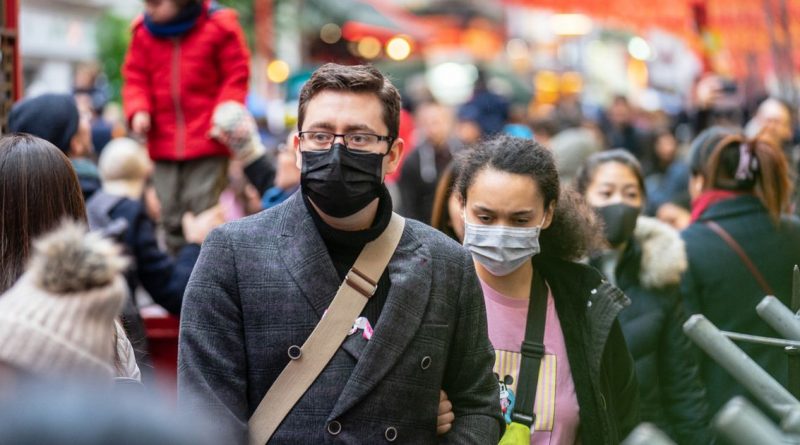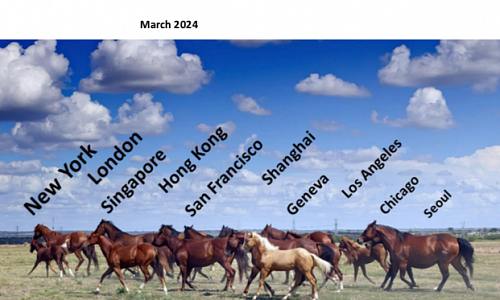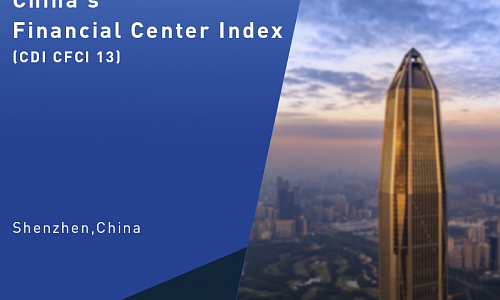Ma Chaoliang
Postdoctoral Fellow
Research Focus
Collaborative Innovation, Innovation-Driven Growth, Finance, Industrial Economy
Education
Ph.D. in Management, University of Science and Technology of China
Contact
Email: macliang@cdi.org.cn
Tel:+86-755-2512 5731
Liu Yu
Senior Research Fellow and Executive Director of Silver-Lake New Energy Research Institute
Research Focus
New Energy Policy, Energy Economics, CO2Emission, Climate Policy and Urbanization
Education
Ph.D. in Environmental Science, Guangzhou Institute of Geochemistry, Chinese Academy of Science
Projects
Mid-term Evaluation of Jinjiang's 13th Five-Year Plan,2018
Study on Development and Policy of Gas Hydrate Industry of Shenzhen,2018
Comprehensive Reform Plan of China General Nuclear Power Corporation,2018
Study on CGN Ling'ao Nuclear Power Project,2017
Study on Electricity Sector Marketilization Reform of Shenergy Group,2017
2030 Agenda for Sustainable Development: Wuhan as the City of Design, 2016
Analysis of Industrial Chain of Major Industries in Shenzhen, 2016
Study on Industrial Development of Biology, Internet and New Materials in Shenzhen in 2015, 2016
Study on Experience and Strategy of Fintech Development in Shenzhen, 2016
Chinese Version of Reinventing Fire: Bold Business Solutions for the New Energy Era, 2015
Study on Transportation Performance Evaluation of Transport Commission of Shenzhen, 2015
Study on Industrial Development and Market Exploitation of Shenzhen, 2015
Implementation Plan for New Energy Auto Development of Shenzhen, 2015
Comparison and Reference of New Energy Auto Development Policy at Home and Abroad, 2015
Guangdong Green Freight Pilot Project, 2015
Evaluation of Annual Operation Status of Shenzhen Taxi Industry, 2014
Collaborative Consulting on Decision-Making of China Southern Power Grid, 2014
Feasibility Study on International Headquarter for Natural Gas Industry in Qianhai, Shenzhen, 2014
Industrial Plan, Access Conditions and Policy Study of Shenzhen International Low Carbon City, 2013
Sustainable Development Mechanism of Mobile Fair-Price Shops, 2011
Contact
Email: liuyu@cdi.org.cn
Tel:+86-755-82470571
Liu Yongxian
Research Fellow
Research Focus
Urban Development, Rural Development, and Industrial Planning
Education
Bachelor of Engineering, Shenzhen University
Projects
Master Plan for Building a National Cultural Industrial Park in West Shiwan Area, Foshan City, 2016
13th Five Year Plan of High-tech Industrial Development Zone, Chongqing Municipality, 2015
New-style Urbanization Planning of Quanzhou, Fujian Province, 2014
Proposal for the 13th Five-Year Planning of Futian District, Shenzhen, 2014
Study on Orientation and Industry Selection of Xiangmihu Area, Shenzhen, 2014
Urban-rural Integration Strategy of Yuelu District, Changsha City, Hunan Province, 2013
Strategy of Upgrading the Development of Sanzhou Village, Foshan City, Guangdong Province, 2013
Development Strategy for Yunfu New City, Guangdong Province, 2012
Annual Consultation for Beijiao Township, Guangdong Province, 2012
Urban Renewal Plan for, BadaitouBinjiang Area, Shanghai, 2015
Positioning and Coordinated Development Plan for Binhai New Area, Xiamen Bay, 2011
Urban Renovation Project of Andongwei, Shandong Province, 2011
Master Plan for Development of Shishi City, Fujian Province, 2011
Contact
Email: yongxian@cdi.org.cn
Tel:+86-755-8247 0980
Liu Liu
Research Fellow
Research Focus
Macroeconomics,Hong Kong and Macao, Innovation-Driven Growth, Regional Economics, Special Economic Zone, Urban Development, Industrial Planning, Industrial Park, Commerce, Health Economy, New Economy, and Business Strategy
Education
Master of Enterprise Economics, Trier University
Projects
China’s Opening Up Beige Book (2014-2015),2015
Overall Plan of Changji New District, Jilin Province,2015
Industrial Plan for Changchun-Jilin Industrial Innovation Development Demonstration Area,2015
Master Plan of Changchun-Jilin-Tumenjiang North Asian Cooperation Pilot Zone,2014
Feasibility Study on Minsheng Jewelry Headquarter in Hefei City, Anhui Province,2014
Feasibility Study on South China Town, Chongqing,2014
Development Strategy Changchun Economic & Technologic Development Zone,2013
Feasibility Study on China South City, Chongqing,2013
Feasibility Study on China South City, Beijing,2013
Feasibility Study on Sino-German Equestrian Industry City,2013
Economic Development Strategy for Shenzhen during the 13th Five-Year Plan Period,2013
Master Plan for Changji New District, Changchun City, Jilin Province,2013
Industrial Plan for Airport Economic Development Zone in Changchun, Jilin Province,2012
Study on Development Conditions and Supportive Policy of Emerging Strategic Industries,2012
Study on Development Conditions for Strategic Emerging Industries in Changchun High-tech Zone, Jilin Province,2012
Feasibility Study on Building China South City in Hefei, Anhui Province,2012
Strategic Vision for Changchun-Jilin Innovative Service Cooperation Zone,2011
Project of International Logistics and Supply Chain Headquarter,2011
Feasibility Study on China-ASEAN Expo Center,2011
Contact
Email: liul@cdi.org.cn
Tel:+86-755-82470535
Liu Jie
Senior Research Fellow
Research Focus
Regional Economics,Public Governance, Industrial Planning, Industrial Park, New Economy, and Business Strategy
Education
Ph.D. inEconomics, Nankai University
Projects
13th Five Year Plan for Shenzhen Yantian Port Group,2016
Interim Performance Evaluation Method for Port Facilities Capital Expenditure of Shenzhen, 2016
Industrial Plan for the Area of Weihe River and Mihe River, Weifang City, Shandong Province, 2016
Implementation Plan for New Energy Auto Development of Shenzhen,2015
13th Five Year Plan for Honghai Bay Economic Development Zone, Shanwei City,2015
13th Five Year Plan for Shenzhen Yantian Port Group,2015
Study on Preventing Conflict of Interest in Qianhai, 2015
Conceptual Study of the 13th Five-Year Plan of Longhua New District, Shenzhen, 2014
Development Strategy for Guiyang Tourism and Cultural Industry Investment Group, 2013
Development Strategy of Guiyang Huaneng Coking Gas Co., Ltd (2013-2020), 2013
Study on Role of Social Forces in Health Care Services, 2012
Contact
Email: liujie@cdi.org.cn
Tel:+86-755-82470532
Liu Fei
Research Fellow
Research Focus
Macroeconomics, Regional Economics, Industrial Planning, Finance, New Economy, and Business Strategy
Education
Ph.D.inEconomics, Nankai University
Projects
Industrial Plan of Urban Renewal Program for Shangliao Area in Bao’an District, Shenzhen,2016
13th Five Year Strategy of Shenzhen Metro Group Co., Ltd,2016
Feasibility Study on Establishment of Anhui Health Industry Investment Management Company,2016
Strategy for Ecological Culture of Dapeng District, Shenzhen,2015
13th Five Year Plan for Engineering Design Industry of Wuhan City, Hubei Province,2015
Publications
Liu, F. (2017).The Internet Financial Model and Regulatory System.Beijing: China Economic Publishing House.
Liu, F. (2007).Research on Vertical Merger and Acquisition of Enterprises.Beijing: China Statistics Publishing House.
Contact
Email: liufei@cdi.org.cn
Tel:+86-755-82470542
Lin Xinqun
Senior Research Fellow and Executive Director of the Industrial and Economic Research Center
Research Focus
Innovation-Driven Growth, Regional Economics, Urban Development, Urbanization, Rural Development, Public Governance, Industrial Planning, Industrial Park, New Economy, and Business Strategy
Education
Master of Science in International Shipping and Transport Logistics, The Hong Kong Polytechnic University
Projects
13th Five Year Plan of Bao'an District, Shenzhen,2016
Summative Evaluation on the Implementation of 12th Five Year Plan of Bao'an District, Shenzhen,2016
Overall Plan of Changji New District, Jilin Province,2016
Interim Performance Evaluation Method for Port Facilities Capital Expenditure of Shenzhen, 2015
Study on Public Service Supply Model of Economic Development Zone of Water, Dongguan City,2015
Industrial Plan for the Area of Weihe River and Mihe River, Weifang City, Shandong Province,2015
Study on Potentials of Economic Growth of Bao’an District, Shenzhen,2015
Study on Supply Mode of Public Service in Waterside Economic Zone, Dongguan City,2014
Industrial Plan of Downtown Area in Weifang City, Shandong Province,2014
Feasibility Study on Wuhan Applying for “City of Design”(UNESCO),2012
Contact
Email: tony@cdi.org.cn
Tel:+86-755-82411017 / +86-755-82470337
Cheng Chuanhai
Senior Research Fellow
Research Focus
Public Policy, Performance Assessment, Public Governance, Urban Development, Innovation-Driven Growth, Regional Economics, Industrial Planning, Business Strategy, and Health Economy
Education
Ph.D. inEconomics, Nankai University
Projects
Index System of Government Performance Evaluation in 2018 and Comprehensive Evaluation of Government Performance in 2017 of Shenzhen, 2007-2017
Shenzhen Financial Development Report, 2009-2017
Study on Qianhai Financial Risks Prevention and Control System, 2016
Study on Financial Risk Early Warning and Monitoring Platform in Shenzhen, 2016
Study on Population Development and Basic Public Service in 13th Five-Year Plan Period in Shenzhen, 2015
Study on Coordinated Development of Population and Economic and Social Development, Shenzhen, 2015
Study on Development of Private Non-Enterprise Scientific Research Institution, Shenzhen, 2015
Implementation Method for Performance Evaluation of Public Security in Shenzhen, 2015
13th Five-Year Plan on Education Development in Longgang District, Shenzhen, 2015
Study on Coordinated Development of Population, Economy and Society in Shenzhen, 2014
Strategy for Investment and Financing System Reform of Yantian District, Shenzhen, 2014
Planning of Social Credit System Construction in Pingshan New District, Shenzhen (2014-2020), 2013
Publications
Cheng,C.(2011).Sub-Regional Monetary Integration: East Asia’s Opportunities and Choices. Beijing: China Economic Publishing House.
Contact
Email: chengchh@cdi.org.cn
Tel:+86-755-8247 0046
Chen Yujiang
Research Associate
Research Focus
Regional Economics, Industry Research, Corporation Finance, Investment and Financing Strategy, Investment Feasibility Analysis, Industrial Planning
Education
Master of Science in Finance, University of Illinois at Urbana-Champaign
Contact
Email: chenyujiang@cdi.org.cn
Tel:+86-139 0225 4422
China’s economic recovery from COVID-19 will be slower than it was for SARS
Contributor: Fan Gang, President of CDI,Yuwa Hedrick-Wong, Chief Economics Commentator, Forbes Asia
Editor’s Note: China’s economic recovery will be unlike the V-shaped rebound from the SARS outbreak in 2003. The structure of the Chinese economy today is very different from 2003, and China will also face global headwinds as the economies in North America and Europe are slowing down because of COVID-19. Expect a more gradual recovery.
Since the SARS outbreak in 2003, China’s economic structure has become more domestic consumption-led in an expanding service sector, and less dependent on infrastructure investment and manufacturing. It is ironic that this positive development is a key reason why the Chinese economy is hit harder this time by COVID-19 than it was by SARS. An epidemic’s economic impact stems from the need to isolate people, which instantly restricts their movement, hence their ability, let alone desire, to spend in terms of entertainment, shopping, travel, socializing, and so on. In 2003, investment counted for about 55% of China’s GDP, and with investment/construction projects having kept going, economic growth continued and the recovery was very quick. Although the GDP growth rate was down by about 5% in the second quarter, the annual growth of 2003 still ended up higher than 2002 by 1%. In contrast, investment in 2019 accounted for less than 40% of GDP, while consumption had risen to 60%. Corresponding to the rise of the weight of consumption in the economy is the expansion of the service sector, which now account for 54% of GDP. In a recovery from an epidemic like COVID-19, restarting activities in private consumption is much slower than restarting investment and manufacturing. This is indeed corroborated by a slower “restart ratio” in consumption and services compared with the “restart ratio” in investment and manufacturing. As a result, the preponderance of consumption and services in the Chinese economy today means that we will not see a sharp V-shaped recovery from COVID-19 as in 2003 as illustrated below.
Furthermore, COVID-19 is a much trickier virus because it can be spread by people who are showing no symptoms at all. It therefore requires longer periods of quarantine and social distancing, which in turn makes the restart of economic activities even slower compared with SARS. The speed and extent to which COVID-19 became global is yet another key difference with SARS. Even as the Chinese economy is returning to normal, Chinese companies have to prepare for a “second wave” of breakdowns of their global supply chains due to the shutdown of foreign factories and international transportation. At the same time, China has to tackle “imported infections” as thousands of Chinese nationals are returning home to “safe-heaven” to escape COVID-19 that is raging in other countries.
It would come as no surprise to see China’s GDP growth rate for the first two quarters of this year down to a very low range of 2% to 3% year-over-year. In the second half of 2020, recovery will gear up, partially thanks to the timely fiscal stimulus and monetary support announced by the government. However, for reasons mentioned above, and given the unfavorable global economic and financial conditions, it is highly unlikely that growth in the second half of the year could be sufficient to bring the full year of GDP growth back to a “normal” level of 6%. Don’t expect a V-shaped recovery like in 2003.


















